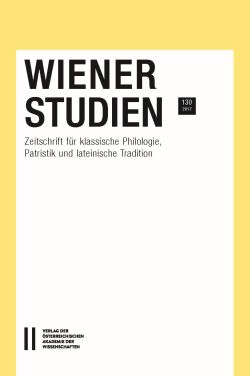
Wiener Studien 130/2017, pp. 127-152, 2017/06/26
Zeitschrift für Klassische Philologie, Patristik und lateinische Tradition

The article discusses the nature of so-called allegorical dreams in Classical antiquity (especially Greek). The author first surveys what kind of content and form these dreams had, who dreamed them and under what circumstances they were dreamed, what the reaction to them was and how they were understood. The article subsequently examines the relationship between allegorical dreams and dream symbols and reaches the conclusion that allegorical dreams weren’t formed by dream symbols that had a constant and constantly valid meaning, but instead by the context, that is, by the situation in which the dreamer found him or herself and which the dream imagination in one way or the other reshaped. This context constituted the first and most important criterion for dream interpreters because, depending on it, the absolute majority of dream symbols changed, or could change, their meaning. Until a sufficiently high number of semantically stable symbols (which certainly didn’t exist until Roman times) had developed, standardized dream-books that provided lists of symbols with an unchanging and definitively given meaning couldn’t emerge.